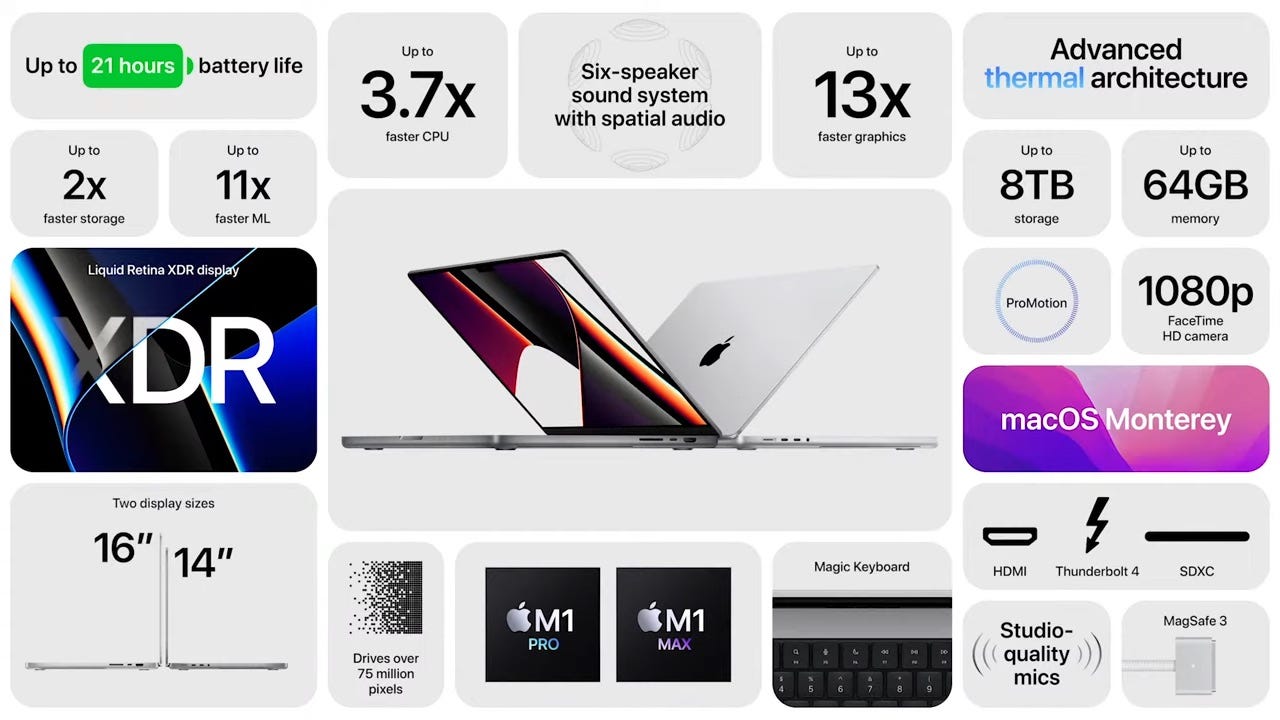First look at Apple M1 Pro and M1 Max

Today, Apple unveiled the next-generation Apple Silicon chips — the M1 Pro and M1 Max.
And they blow away the competition.
The M1 Pro brings more performance to the table, while the M1 Max brings even more.
The M1 Pro chips are built using 5-nanometer architecture and feature a CPU with up to 10-cores, and a GPU with up to 16-cores, along with a 16-core neural engine capable of 11 trillion operations per second.
Backing this up is up to 32GB of unified memory with 200GB/s memory bandwidth. The chip offers support for two external displays.
Apple has managed to cram a whopping 33.7 billion transistors onto the M1 Pro die.
Must read: Apple finally admits it made a mistake and backtracks on three foolish MacBook Pro design decisions

MacBook Pro with M1 Max features
M1 Pro
M1 Pro
M1 Pro
New M1 Pro
But it gets better with the M1 Max.
A lot better.
Using the same 5-nanometer architecture, the M1 Pro features a CPU with up to 10-cores, a 16-core neural engine, and a GPU with up to 32-cores, for a total of 57 billion transistors.
The RAM also pushes the envelope, offering up to 64GB of unified memory, featuring 400GB/s memory bandwidth.
According to Apple, both chips offer industry-leading performance per watt.
M1 Max
M1 Max
New M1 Max
M1 vs M1 Pro vs M1 Max
These are no-compromise processors, offering the best possible performance at the best possible power consumption.
On the CPU front, the new M1 Pro and M1 Max offer 1.7x the performance of the leading 8-core mobile CPU, but at 70 percent less power consumption.
M1 Pro and M1 Max CPU performance
And it doesn't end there. On the GPU front, the M1 Pro has a 7x lead over the best-integrated graphics chip on offer in a laptop.
M1 Pro has a 7x lead over the best-integrated graphics chip
When compared to laptops with discrete GPUs, the M1 Pro comes close to the same performance but does that with 70% less power consumption.
Close to the same performance as discrete GPUs, but for far less power consumption
When compared to the highest-end PC laptop graphics, the M1 Max delivers similar levels of performance while consuming 100W less power.
M1 Max shows significantly lower power consumption compared to high-end PC laptop GPUs
But where the performance really shines is when the new M1 Pro and M1 Max MacBook Pros are running on battery. This is when PC systems are throttled, while the MacBook Pros carry on running at full power, with the M1 Max offering 2.5x the performance of compact pro-PC laptop graphics and 3.3x the performance of high-end PC laptop graphics.
M1 Max GPU on battery power vs the competition
M1 Max GPU on battery power vs the competition
All in all, the M1 Pro and M1 Max look like they take what Apple did with the M1 chip, and give it a performance boost worthy of the MacBook Pro.